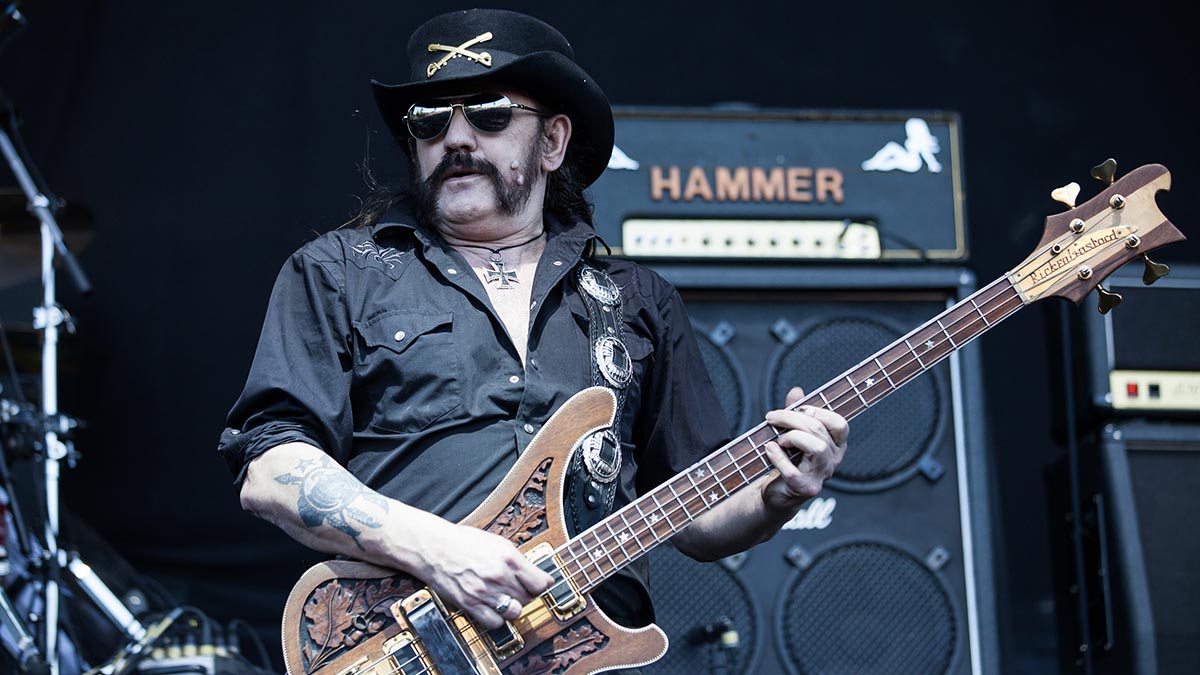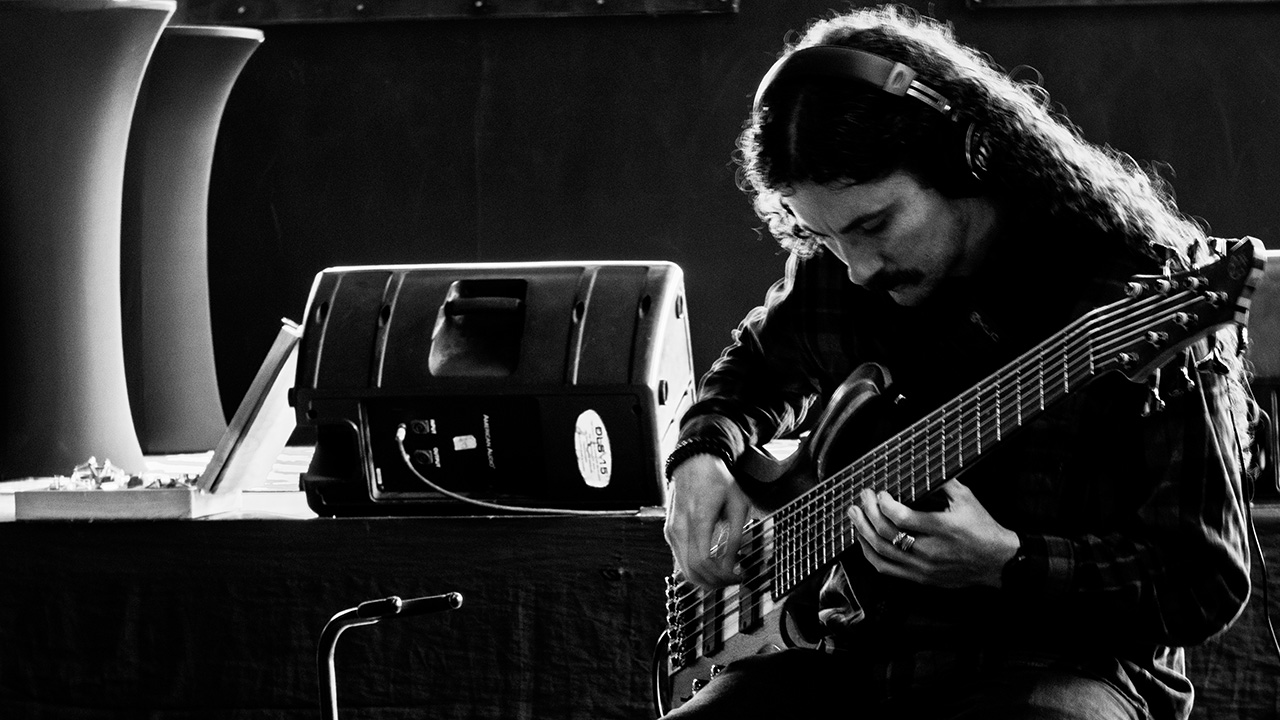How Lemmy Kilmister found his terrifying bass tones: “I just turn it up really loud and hit it really hard!”
We remember the Motörhead leader and unpack the gear and playing secrets behind the most fearsome low-end sound in rock

“I’m made for bass – I’m supposed to play bass, that’s what I’m supposed to do,” said Ian ‘Lemmy’ Kilmister, who departed for the great gig in the sky in December 2015. In our world, bass is indeed what the great man remains best known for, but let’s not forget that he was many other things, too – a singer, songwriter, guitarist, blues harp player, TV personality, actor, and most certainly a bon viveur.
You could even label Lemmy an intellectual, arguably, as he was widely read, politically informed, and able to discourse learnedly on a number of philosophical subjects.
The great contrast there, of course, was that he indulged in the rock ’n’ roll lifestyle with as much commitment as any of the elite, at least in his younger days, working his way through speed, booze, and women at scale. How he made it to 70 – just – is presumably down to good genes and the avoidance of heroin, the one drug that he refused to take, the stuff having been responsible for the death of an early girlfriend.
Born the son of a clergyman in 1945, Lemmy – said to be so nicknamed because of his habit of borrowing cash from his bandmates, we’re told, although this was never fully confirmed – was initially a guitarist in the obscure R&B band the Rockin’ Vickers. When the psychedelia boom took off in the mid-'60s he joined the Sam Gopal Dream before roadie-ing briefly for Jimi Hendrix, but his career really took off when he joined space-rockers Hawkwind in 1970.
He told writer Chris Shonting: “What I liked about Hawkwind was that it was the first time I played bass, and I found out that I could be a good bass player. So I became a bass player, and I was really good at it, you know?
“That was a great thing for me – kind of an eye-opener – and also there was a lot of freedom within that band to play bass. I did a lot of fill-ins and a lot of smart shit... You know, I was showing off as usual. What’s it for if you can’t show off? It’s rock ’n’ roll, so you might as well.”
Talking to BP, he said that his bass playing “was based on guitar. I found out about drone strings, where you let the A or the D string ring and play the melody on the G. It falls in very well behind the guitar. I used a lot of chords, too.”
All the latest guitar news, interviews, lessons, reviews, deals and more, direct to your inbox!
Fired in 1975 after being wrongfully detained for drugs on the US/Canadian border – the irony of being ejected for this reason from the infamously drug-addled Hawkwind always amused him – Lemmy formed Motörhead, and went on to much better things.
“I just turn it up really loud and hit it really hard!” he once growled at us. “No effects. I’ve never really used any pedals. I tried a wah-wah once, but it doesn’t really work with bass. It’s pointless, isn’t it? Effects always fuck up anyway, and then the feedback starts howling, and you’re standing there like a dickhead.”
I tried a wah-wah once, but it doesn’t really work with bass. It’s pointless, isn’t it?
A Marshall user for life, he explained, “I’ve got two old Marshall JMP Super Bass 2s, with 4x15s and 4x12s on each side. I got the 4x15s in America. We went down to this guy’s house, and his wife showed us this summerhouse in the garden.
“We had to dig our way through all this furniture and shit, and there were these two cabs with the covers on. She pulled the covers off and they were Marshalls from the '60s. They haven’t made 4x15s for a long time. They were brand new, never been used. And I got the two of them for four-hundred bucks!”
As for bass guitars, Lemmy usually – but not always, you may be surprised to hear – preferred to play a Rickenbacker, ending his career with a signature model, the 4004LK.
Picking the strings near the neck, he came up with an indistinct tone that provided more of a texture than actual individual notes. We asked him if the strings lacked tension when plucked at that point, and he explained: “Well, I don’t use small-gauge strings. I’m a great believer that there should be heavy-gauge, medium, and light and that’s all, otherwise it’s too confusing.”
I don’t mind the bass getting lost, because I think a band should sound like three or four guys playing together. It shouldn’t sound like four fuckin’ solo instruments
Understandably enough, he didn’t take particularly kindly to naive observations from us such as, ‘The bass isn’t very clear in your songs’, batting that one aside with, “Well, you see I don’t mind the bass getting lost, because I think a band should sound like three or four guys playing together. It shouldn’t sound like four fuckin’ solo instruments.
“I don’t understand why you’d want to hear just one instrument. I just see the wall, I don’t see the bricks on their own... I like it to sound like a band, like the Beatles always did. Even Hendrix, you couldn’t tell what the fuck was going on with him. There’d be so many guitars on there. I like to hear a band, that’s the idea of being in a band. You play together!”
Never precious about the secrets of his tone, Lemmy was the polar opposite of certain bassists who we come across at BP who refuse to divulge the contents of their pedalboards as if they contain state secrets.
Perhaps this was because he didn’t bother with effects, but we like to think it was because he just didn’t care about that stuff. He was happy to reveal his chosen EQ –you can plug in and play for yourself.
Our final interview with Lemmy took place on September 9, 2015, when BP writer Jamie Blaine went to meet him in Indianapolis. “My solo album’s nearly finished,” Lemmy told Jamie.
“I’ve just got one more track to do. I sing on all the songs and play bass on some. It should be out by the middle of 2016.” As for the future of Motörhead, he said, “We’ll be in England early next year, doing some shows with our old friends Girlschool, that’ll be nice. Then we’ll do another Motörhead record. I want to do another, for sure.”
As Lemmy was obviously in poor health, Jamie took the opportunity to thank him for “all he’s given, for the endless tours and countless anthems, for never being anything less than exactly who he is”. A wise decision in retrospect.
“Lemmy fumbles with his hands,” he wrote, “and for a moment is silent. “Ah, you don’t ever think that way, really,” he says finally. “You just play music with a few guys and see what happens. And here we are 40 years later.” And with that, Lemmy Kilmister laughs, lights a cigarette and heads off towards the stage.”
Heartbreaking stuff, especially as neither solo album nor new Motörhead album has materialized, but after six years, he’d be laughing in a mixture of amusement and scorn if he knew that we were still mourning him. Put on your favorite Hawkwind or Motörhead song, pour a drink, and let the good times roll. It’s definitely what he would have wanted.
Joel McIver was the Editor of Bass Player magazine from 2018 to 2022, having spent six years before that editing Bass Guitar magazine. A journalist with 25 years' experience in the music field, he's also the author of 35 books, a couple of bestsellers among them. He regularly appears on podcasts, radio and TV.

